
The Majestic Wonders of Zion National Park
Explore the stunning sandstone cliffs, diverse wildlife, and rich cultural history of Zion National Park in Utah, a must-visit destination for nature lovers and adventurers.
Zion National Park, located in southwestern Utah, is a natural treasure that captivates visitors with its stunning landscapes and diverse ecosystems. The park is renowned for its towering sandstone cliffs, which range in color from creamy whites to deep reds, creating a dramatic and picturesque backdrop for any adventure. The Virgin River carves through the park, offering lush oases in an otherwise arid environment. One of the most popular activities in Zion is hiking. The park boasts a variety of trails suitable for all skill levels, from the family-friendly Riverside Walk to the thrilling and challenging Angels Landing. The Narrows, a hike through the riverbed of the Virgin River, is a unique experience where visitors wade through water surrounded by towering canyon walls. Each trail provides its own unique perspective of the park's breathtaking beauty. Wildlife enthusiasts will find Zion to be a haven for observing a wide range of animals. Mule deer, bighorn sheep, and numerous bird species make their homes in the park, offering plenty of opportunities for wildlife photography. The park's diverse plant life, ranging from desert cacti to hanging gardens, adds to the rich tapestry of Zion's natural environment. Zion National Park is also a place of rich cultural history. The park's human history dates back thousands of years, with evidence of ancient Native American cultures found throughout the area. Today, visitors can explore historic sites and learn about the park's cultural heritage through ranger-led programs and exhibits at the Zion Human History Museum.
Local tips in Zion National Park
- Visit in the spring or fall for the best weather and fewer crowds.
- Start your hikes early in the morning to avoid the midday heat and ensure parking availability.
- Bring plenty of water and snacks, as services within the park are limited.
- Wear appropriate footwear, especially for hikes like The Narrows where you will be walking in water.
- Use the park shuttle system to get around; private vehicles are restricted in certain areas.
- Take time to visit the Zion Human History Museum to learn about the park's cultural and natural history.
The Majestic Wonders of Zion National Park
Zion National Park, located in southwestern Utah, is a natural treasure that captivates visitors with its stunning landscapes and diverse ecosystems. The park is renowned for its towering sandstone cliffs, which range in color from creamy whites to deep reds, creating a dramatic and picturesque backdrop for any adventure. The Virgin River carves through the park, offering lush oases in an otherwise arid environment. One of the most popular activities in Zion is hiking. The park boasts a variety of trails suitable for all skill levels, from the family-friendly Riverside Walk to the thrilling and challenging Angels Landing. The Narrows, a hike through the riverbed of the Virgin River, is a unique experience where visitors wade through water surrounded by towering canyon walls. Each trail provides its own unique perspective of the park's breathtaking beauty. Wildlife enthusiasts will find Zion to be a haven for observing a wide range of animals. Mule deer, bighorn sheep, and numerous bird species make their homes in the park, offering plenty of opportunities for wildlife photography. The park's diverse plant life, ranging from desert cacti to hanging gardens, adds to the rich tapestry of Zion's natural environment. Zion National Park is also a place of rich cultural history. The park's human history dates back thousands of years, with evidence of ancient Native American cultures found throughout the area. Today, visitors can explore historic sites and learn about the park's cultural heritage through ranger-led programs and exhibits at the Zion Human History Museum.
When is the best time to go to Zion National Park?
Iconic landmarks you can’t miss
Zion Canyon Visitor Center
Explore the stunning landscapes of Zion National Park from the Zion Canyon Visitor Center, your essential guide to adventure and nature's beauty.
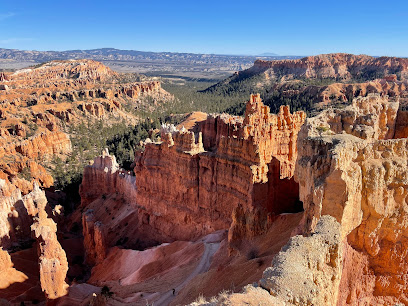
East Zion Adventures
Experience the thrill of outdoor adventures and breathtaking landscapes at East Zion Adventures, your gateway to Zion National Park's stunning beauty.
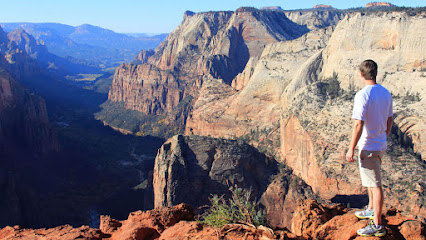
Zion Ponderosa Ranch Resort
Discover adventure and tranquility at Zion Ponderosa Ranch Resort, your gateway to the majestic landscapes of Zion National Park.
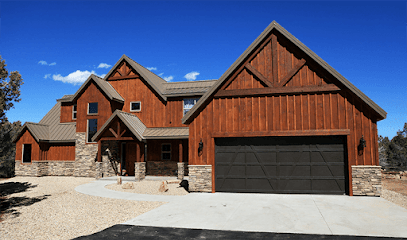
Zion Human History Museum
Explore the captivating stories of Zion National Park's history at the Zion Human History Museum, where nature and culture intertwine.
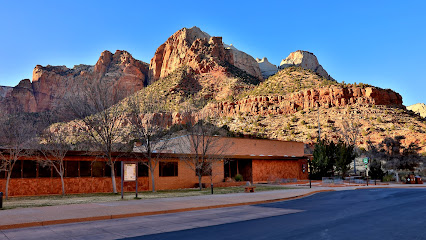
Zion National Park Lodge
Discover Zion National Park Lodge, a haven for nature lovers and adventure seekers, surrounded by stunning landscapes and endless outdoor activities.

Zion Wildflower Resort - Glamping Zion National Park
Discover the serene beauty of Zion Wildflower Resort, where luxury glamping meets the natural wonders of Zion National Park.
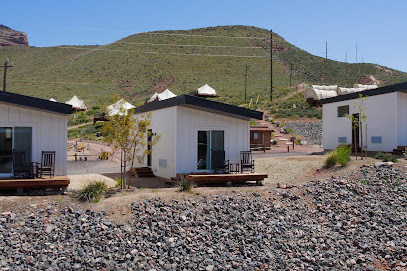
Under Canvas Zion
Discover Under Canvas Zion for a unique glamping experience near breathtaking Zion National Park, blending nature with luxury in Utah's stunning landscapes.

Zion White Bison Glamping + RV Resort
Discover a harmonious blend of luxury camping and nature at Zion White Bison Glamping + RV Resort, your gateway to Zion National Park's stunning landscapes.

The Zion-Mount Carmel Tunnel
Discover the Zion-Mount Carmel Tunnel, a historic passageway through stunning landscapes in Zion National Park, offering breathtaking views and unforgettable experiences.
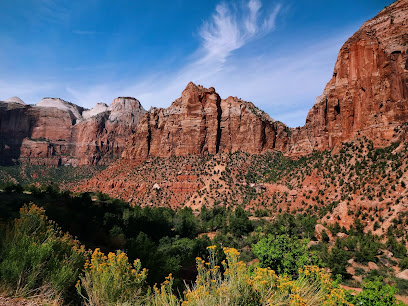
Zion Guide Hub
Discover Zion National Park's breathtaking beauty with personalized tours and thrilling adventures at Zion Guide Hub.
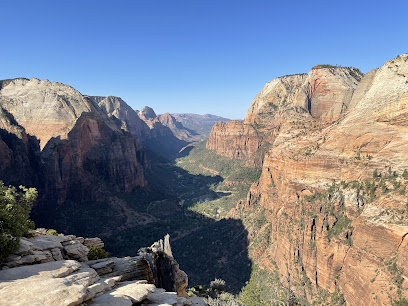
Pa'rus Trail Zion National Park
Explore the beautiful Pa'rus Trail in Zion National Park, a scenic pathway perfect for hiking and biking, surrounded by breathtaking landscapes and rich wildlife.

Open Sky Zion
Experience the perfect blend of adventure and relaxation at Open Sky Zion, your serene resort hotel near Zion National Park.

Zion Red Rock Villa
Discover the perfect blend of adventure and relaxation at Zion Red Rock Villa, your gateway to Zion National Park's stunning landscapes.
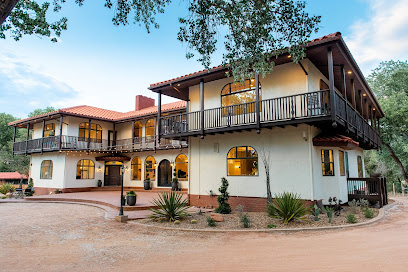
Zion-Mount Carmel Tunnel - East Entrance
Experience the breathtaking Zion-Mount Carmel Tunnel, a remarkable engineering feat nestled within the stunning landscapes of Zion National Park.

Unmissable attractions to see
Zion Canyon Visitor Center
Discover the gateway to Zion National Park's breathtaking landscapes and diverse wildlife at the Zion Canyon Visitor Center.
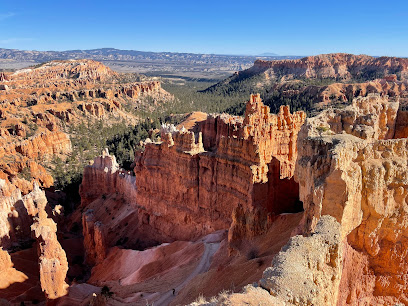
Sand Hollow State Park
Explore Sand Hollow State Park: A breathtaking blend of red rock formations and recreational paradise in Utah, perfect for outdoor adventures and family fun.
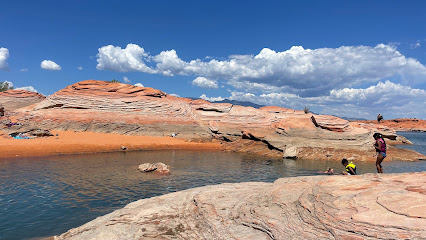
Dixie National Forest
Explore the breathtaking beauty of Dixie National Forest in Utah, a haven for adventure seekers and nature enthusiasts alike.
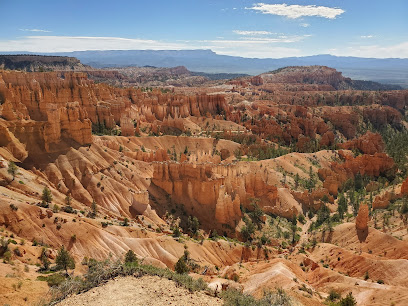
Snow Canyon State Park
Explore the captivating landscapes of Snow Canyon State Park in Utah, where red rock formations meet outdoor adventure and natural beauty.
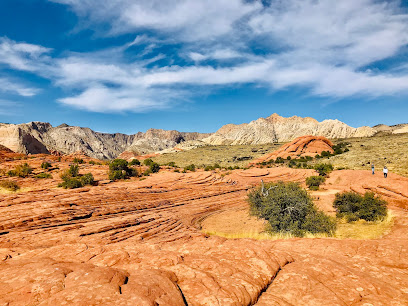
East Zion Adventures
Experience breathtaking landscapes and thrilling outdoor activities at East Zion Adventures, the ultimate destination for nature lovers and adventure seekers in Utah.
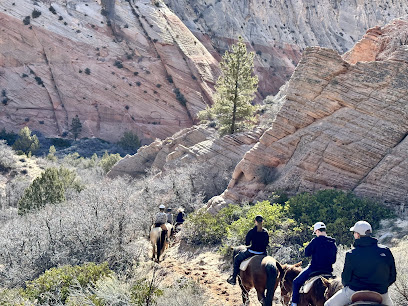
Quail Creek State Park
Experience outdoor adventures and stunning landscapes at Quail Creek State Park, a hidden gem in Hurricane, Utah.
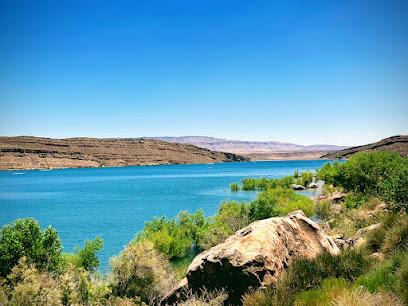
Quail Creek State Park
Explore Quail Creek State Park: A stunning Utah destination for outdoor adventures, serene landscapes, and unforgettable family fun.
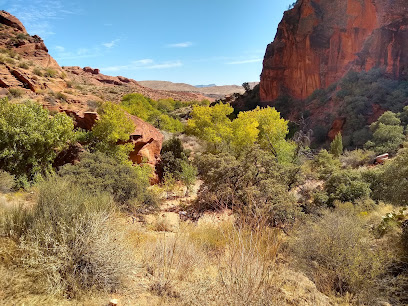
Fort Zion
Explore Fort Zion: A captivating blend of wildlife, exquisite jewelry, and delicious dining in the heart of Utah's stunning landscapes.
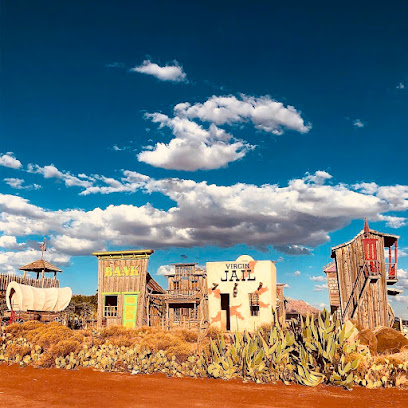
Zion Human History Museum
Explore the fascinating history and culture of Zion National Park at the Zion Human History Museum, where every artifact tells a story of nature and humanity.
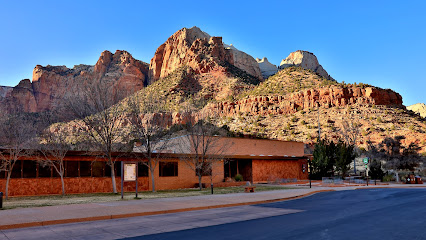
Zion National Park Lodge
Discover the tranquility and adventure of Zion National Park Lodge in the heart of Utah's stunning landscapes.

Pine Creek Canyon Overlook
Experience the breathtaking beauty of Pine Creek Canyon Overlook in Zion National Park, a must-visit destination for nature lovers and adventure seekers alike.
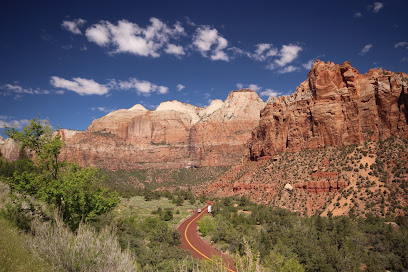
Grafton Ghost Town
Discover the haunting beauty of Grafton Ghost Town, a historic gem nestled near Zion National Park, showcasing rich history and stunning landscapes.
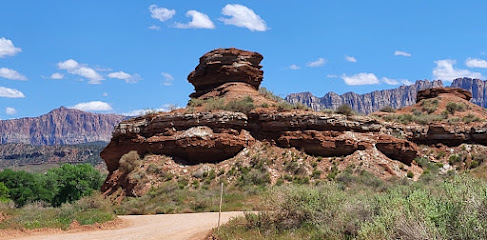
The Narrows
Discover the breathtaking beauty of The Narrows in Zion National Park, a unique hiking adventure through stunning canyons and the Virgin River.
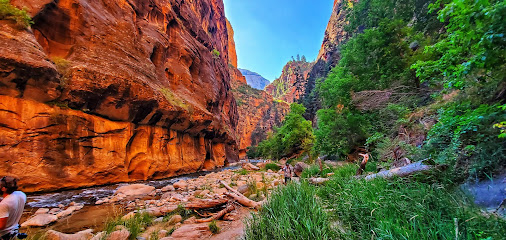
George Barker River Park
Experience the serenity of George Barker River Park, a hidden gem in Springdale, perfect for relaxation and enjoying stunning natural beauty.
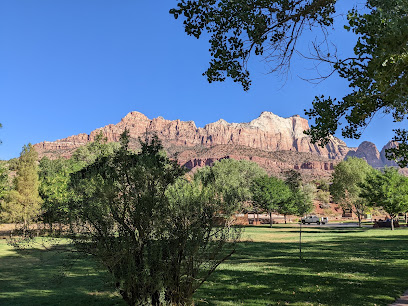
Emerald Pools Trailhead
Explore the breathtaking Emerald Pools Trailhead in Zion National Park, where stunning vistas and serene landscapes await your adventure.
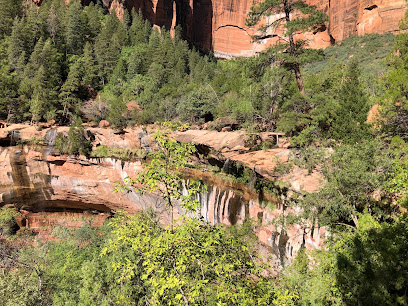
Essential places to dine
Stage Coach Grille
Experience authentic Southwestern cuisine at Stage Coach Grille in La Verkin—where delicious steaks meet warm hospitality near Zion National Park.
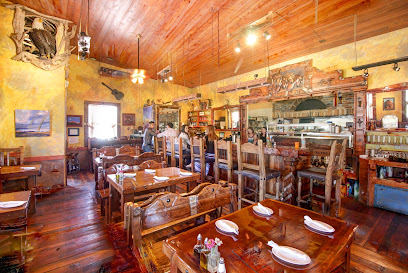
MeMe's Café
Discover MeMe's Café in Springdale - where delightful cuisine meets stunning views near Zion National Park.

Thunderbird Restaurant
Discover Thunderbird Restaurant: A charming American eatery offering delightful dishes amidst stunning mountain views near Zion National Park.
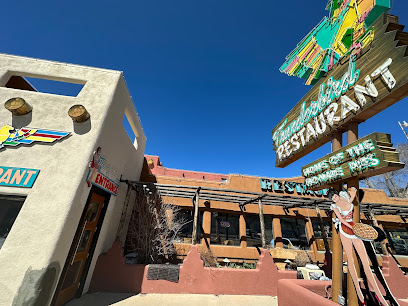
Zion Pizza & Noodle Co
Experience mouthwatering pizzas and pastas at Zion Pizza & Noodle Co near Zion National Park—your perfect dining spot after an adventure!
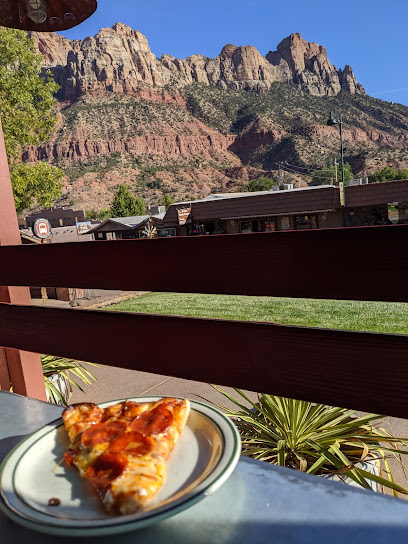
Zion Canyon Brew Pub
Experience locally crafted beers and delicious cuisine at Zion Canyon Brew Pub while surrounded by breathtaking views near Zion National Park.
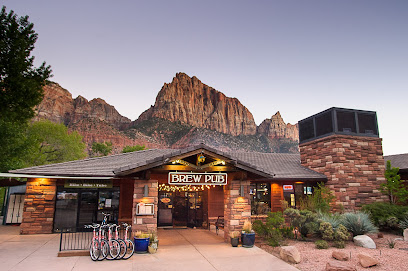
Oscar's Cafe
Discover culinary delights at Oscar's Cafe in Springdale—where delicious food meets breathtaking views near Zion National Park.
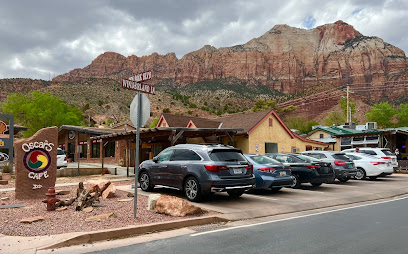
Bit & Spur Restaurant & Saloon
Experience authentic Southwestern flavors at Bit & Spur Restaurant & Saloon near Zion National Park - where every bite tells a story.

Whiptail Grill
Experience vibrant Mexican flavors at Whiptail Grill near Zion National Park—where delicious food meets breathtaking scenery.
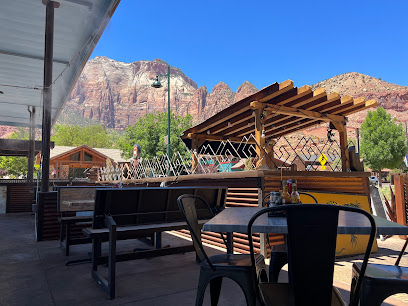
Rooster Run Cafe
Experience authentic American cuisine at Rooster Run Cafe in Hurricane, Utah - your perfect dining destination after exploring Zion National Park.
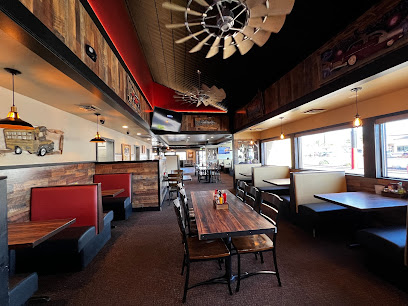
Spotted Dog
Discover Spotted Dog: A charming American restaurant near Zion National Park offering delicious cuisine and breathtaking views.

Porter's
Experience traditional American cuisine at Porter's in Springdale – where local flavors meet exceptional dining near Zion National Park.
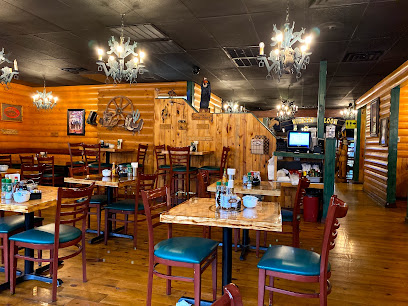
Thai Sapa
Experience the best of Thai cuisine at Thai Sapa, an Asian fusion restaurant near Zion National Park, offering delicious dishes in a welcoming atmosphere.
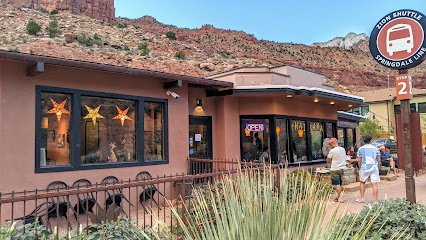
Balcony One
Experience delectable American cuisine at Balcony One in Virgin, Utah – your gateway to unforgettable flavors and stunning views near Zion National Park.
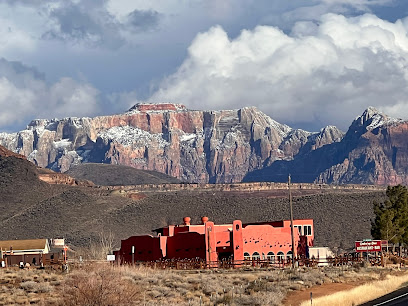
Deep Creek Coffee Company
Discover Deep Creek Coffee Company in Springdale - where fresh brews meet breathtaking views near Zion National Park.
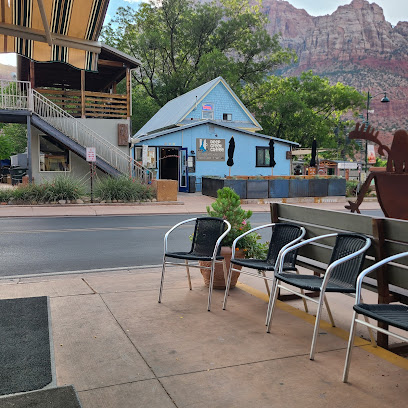
King's Landing Bistro
Experience exquisite American cuisine at King's Landing Bistro near Zion National Park - perfect for unwinding after your outdoor adventures.
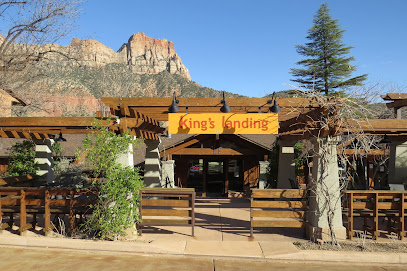
Markets, malls and hidden boutiques
Zion Guru
Discover Zion National Park's beauty with Zion Guru—your go-to for adventure sports, rentals, and expert guidance in the heart of nature.
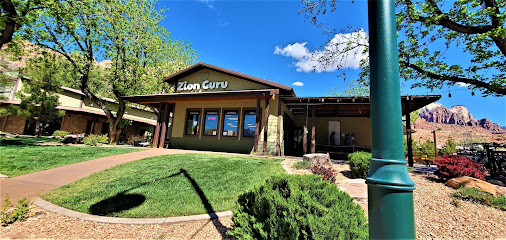
The Shoppes at Zion
Discover unique shops and delightful dining at The Shoppes at Zion, a must-visit shopping mall in St. George, Utah, surrounded by breathtaking scenery.

Fort Zion
Explore Fort Zion, a unique shopping and dining destination in Virgin, Utah, featuring souvenirs, jewelry, and a cozy restaurant amidst stunning landscapes.
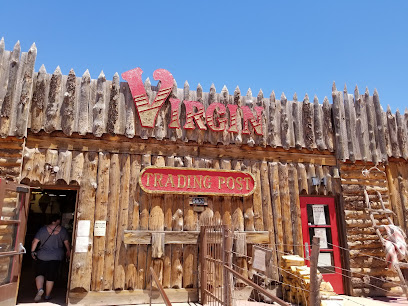
Zion Outfitter
Explore the great outdoors with top-notch rentals, expert advice, and quality gear at Zion Outfitter in beautiful Springdale, Utah.
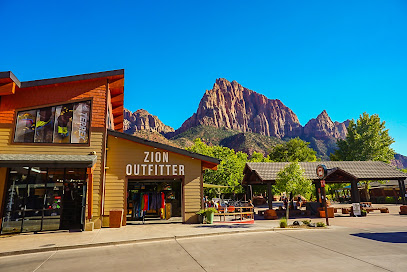
The Rock Stop
Explore The Rock Stop in Orderville, Utah – a unique gift and rock shop with a cozy coffee corner perfect for souvenirs and local treasures.
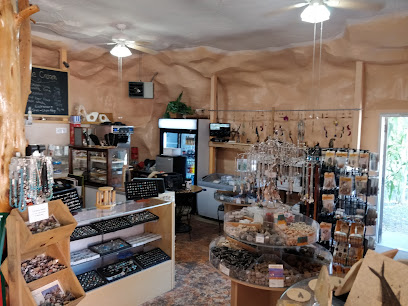
Zion Rock & Gem
Discover the captivating world of rocks and gems at Zion Rock & Gem in Springdale, Utah, near the iconic Zion National Park.
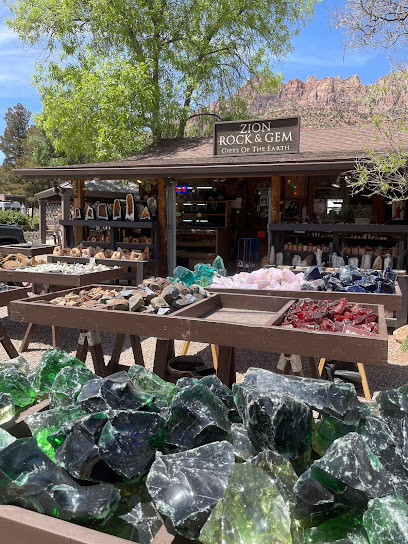
Under Canvas Zion
Discover the perfect blend of luxury camping and outdoor adventure at Under Canvas Zion, your gateway to Utah's stunning Zion National Park.

Hoodoos General Store, Deli, Ice Cream Parlor, and Gift Shop
Experience the best of Springdale at Hoodoos General Store, where adventure meets local charm and delicious treats await every visitor.
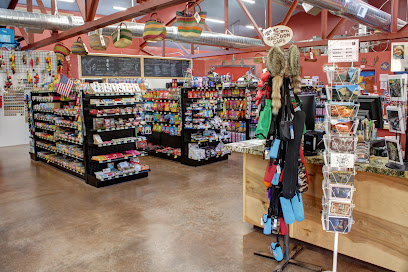
Bumbleberry Gift Shop And Bakery
Discover the charm of Bumbleberry Gift Shop and Bakery, where delightful treats and unique souvenirs await near Zion National Park.
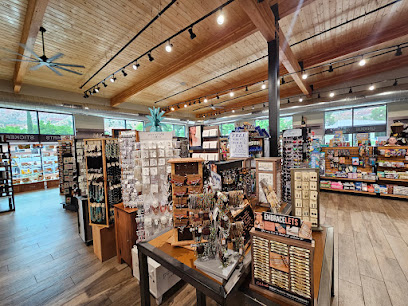
Zion Prospector
Explore a unique gift shop in Springdale, Utah, offering stunning rocks, jewelry, and memorable souvenirs near Zion National Park.
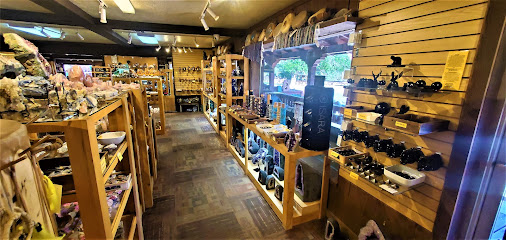
White Mountain Trading Post
Explore the enchanting White Mountain Trading Post, your gateway to unique gifts and outdoor gear near Zion National Park.

Springdale Candy Company
Discover an enchanting world of sweets at Springdale Candy Company, where handmade chocolates and artisanal ice creams await every visitor.
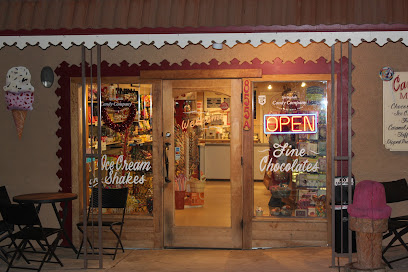
Cowboys & Indians
Explore Cowboys & Indians, a unique gift shop in St. George, Utah, showcasing Western-themed treasures and local craftsmanship.
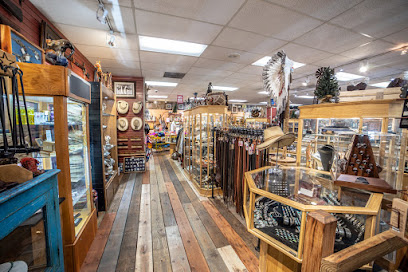
David J. West Gallery
Explore local artistry and unique gifts at David J. West Gallery in Springdale, Utah, a must-visit destination for art lovers.
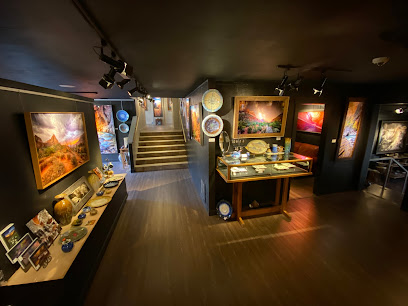
Bryce Canyon Trading Post
Explore Bryce Canyon Trading Post for authentic Native American crafts and a taste of rich cultural heritage near stunning natural landscapes.
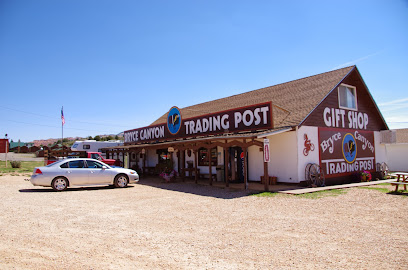
Essential bars & hidden hideouts
Stage Coach Grille
Experience the authentic taste of America at Stage Coach Grille, a premier steakhouse in La Verkin, Utah, serving up delicious Southwestern flavors.
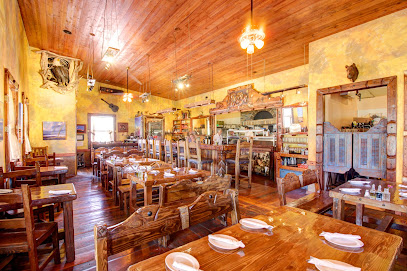
MeMe's Café
Discover MeMe's Café in Springdale, where delicious breakfasts, gourmet burgers, and a cozy atmosphere await visitors exploring Zion National Park.

Zion Pizza & Noodle Co
Indulge in delicious pizzas and hearty pasta dishes at Zion Pizza & Noodle Co, a family-friendly restaurant near Zion National Park.
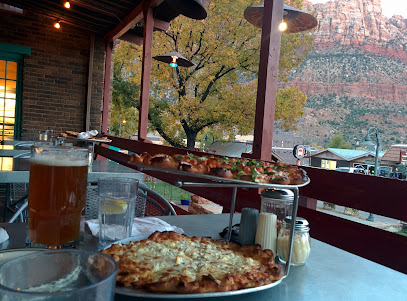
Zion Canyon Brew Pub
Discover delicious craft beer and hearty cuisine at Zion Canyon Brew Pub, a culinary gem near Zion National Park's breathtaking landscapes.
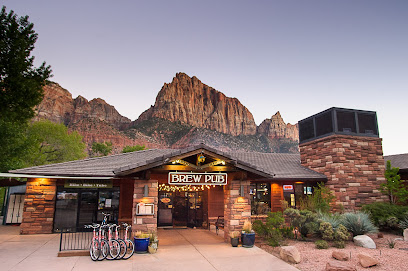
Oscar's Cafe
Discover delicious dining at Oscar's Cafe, a culinary treasure in Springdale, Utah near Zion National Park.
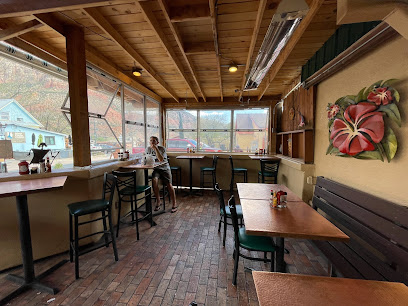
Bit & Spur Restaurant & Saloon
Experience the vibrant flavors of Southwestern cuisine at Bit & Spur Restaurant & Saloon, just minutes from Zion National Park.
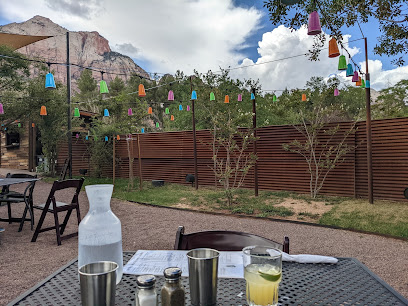
Whiptail Grill
Savor authentic Mexican flavors at Whiptail Grill, the perfect dining spot for tourists near Zion National Park.
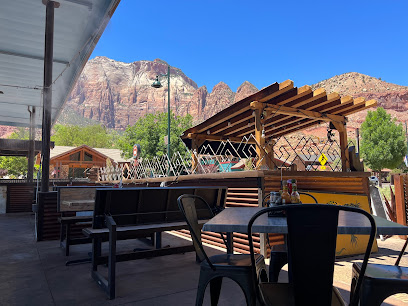
Spotted Dog
Discover the flavors of America at Spotted Dog, where comfort food meets the breathtaking beauty of Zion National Park.
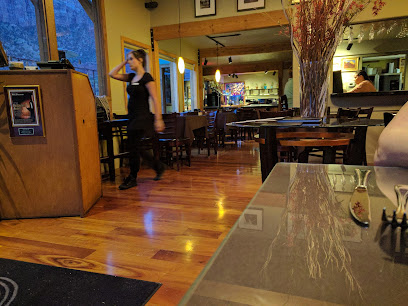
Porter's
Discover Porter's in Springdale, offering traditional American cuisine with a cozy atmosphere, perfect for travelers visiting Zion National Park.
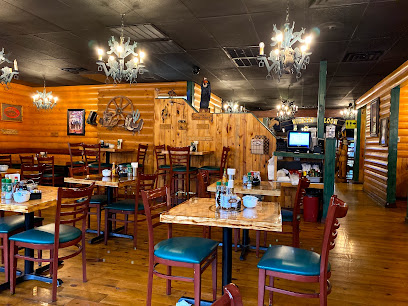
Thai Sapa
Experience the unique flavors of Thai Sapa, a culinary gem near Zion National Park offering a perfect blend of traditional Thai and Asian fusion cuisine.
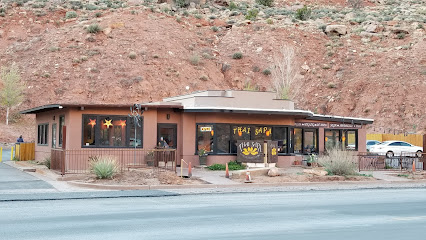
St Helen's Restaurant and Sports Bar
Experience the flavors of America at St Helen's Restaurant and Sports Bar - your go-to spot for breakfast and sports in Washington, Utah.
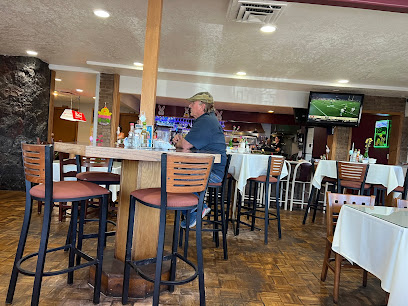
Cafe Soleil
Discover the culinary delights of Cafe Soleil, where fresh flavors and stunning views meet in the heart of Springdale, Utah.

Balcony One
Experience the best of American cuisine at Balcony One in Virgin, Utah, where flavor meets stunning scenery and warm hospitality.
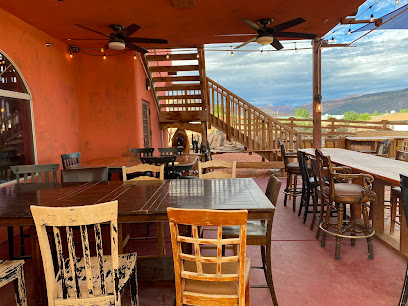
Jack's Sports Grill
Experience the perfect blend of flavor and fun at Jack's Sports Grill, a beloved spot for tourists in beautiful Springdale, Utah.
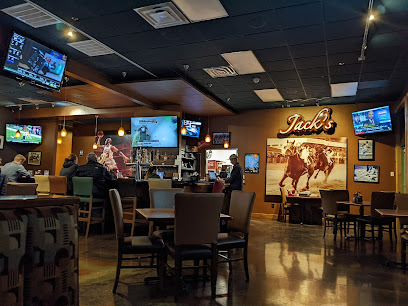
Deep Creek Coffee Company
Discover Deep Creek Coffee Company in Springdale, UT – your perfect stop for artisan coffee, fresh bakery delights, and healthy eats near Zion National Park.
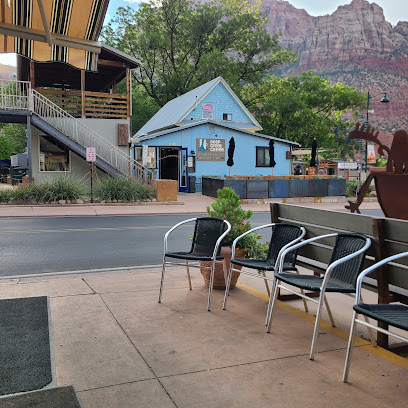
Local Phrases about Zion National Park
-
- HelloHowdy
[hah-dee] - GoodbyeSo long
[soh lawng] - YesYup
[yuhp] - NoNah
[nah] - Please/You're welcomePlease/No problem
[pleez/no praw-bluhm] - Thank youThanks
[thanks] - Excuse me/SorryPardon me
[pahr-dun mee] - How are you?Howdy
[hah-dee] - Fine. And you?Good. You?
[good. yuh?] - Do you speak English?You speak English?
[yoo speek ing-glish?] - I don't understandI don't get it
[I don't get it]
- HelloHowdy
-
- I'd like to see the menu, pleaseMenu, please
[meh-nyoo, pleez] - I don't eat meatNo meat for me
[noh meet fohr mee] - Cheers!Cheers!
[cheers!] - I would like to pay, pleaseCheck, please
[chek, pleez]
- I'd like to see the menu, pleaseMenu, please
-
- Help!Help!
[help!] - Go away!Leave me!
[leev mee!] - Call the Police!Police!
[puh-lees!] - Call a doctor!Doctor!
[dok-ter!] - I'm lostLost
[lost] - I'm illSick
[sik]
- Help!Help!
-
- I'd like to buy...I want to buy...
[I want to buy...] - I'm just lookingJust browsing
[just brow-zing] - How much is it?How much?
[how much?] - That's too expensiveToo pricey
[too pry-see] - Can you lower the price?Discount?
[dis-count?]
- I'd like to buy...I want to buy...
-
- What time is it?What time?
[wut tahym?] - It's one o'clockOne o'clock
[wuhn oh-klok] - Half past (10)Half past (10)
[haf past (10)] - MorningMorning
[mawrn-ing] - AfternoonAfternoon
[af-ter-noon] - EveningEvening
[ee-ven-ing] - YesterdayYesterday
[yess-ter-day] - TodayToday
[toh-day] - TomorrowTomorrow
[toh-mor-row] - 1One
[wuhn] - 2Two
[too] - 3Three
[three] - 4Four
[fore] - 5Five
[fahyv] - 6Six
[siks] - 7Seven
[sev-uhn] - 8Eight
[ayt] - 9Nine
[nine] - 10Ten
[ten]
- What time is it?What time?
-
- Where's a/the...?Where's the...?
[wheres the...?] - What's the address?Address?
[uh-dress?] - Can you show me (on the map)?Show me
[show mee] - When's the next (bus)?Next bus?
[next bus?] - A ticket (to ....)Ticket
[tik-it]
- Where's a/the...?Where's the...?
History of Zion National Park
-
Long before it became a national park, the Zion area was home to various Indigenous peoples. The Ancestral Puebloans, also known as the Anasazi, and the Southern Paiute lived in this region for thousands of years. They left behind petroglyphs, pictographs, and other archaeological remnants that offer a glimpse into their rich culture and history.
-
Zion National Park was officially established on November 19, 1919. Originally called Mukuntuweap National Monument in 1909, it was renamed to Zion to reflect the local Mormon heritage. The name 'Zion' itself is derived from a biblical term meaning a place of refuge or sanctuary.
-
In the mid-19th century, Mormon pioneers settled in the Zion area, drawn by the fertile land and abundant water sources. They established small communities and named many of the park’s features, such as the Virgin River, after biblical references. Their influence is still evident in the names and cultural stories tied to the park.
-
During the Great Depression, the Civilian Conservation Corps (CCC) played a significant role in developing Zion National Park's infrastructure. From 1933 to 1942, the CCC built trails, campgrounds, and other facilities that visitors continue to use today. Their work helped shape the park into the accessible and well-maintained destination it is now.
-
The advent of the automobile in the early 20th century made Zion National Park more accessible to the general public. The construction of the Zion-Mount Carmel Highway and Tunnel in the 1930s further facilitated travel to the park. This period marked the beginning of Zion as a major tourist destination, attracting visitors from around the world.
-
Zion’s stunning landscapes are the result of millions of years of geological processes. The park's iconic Navajo Sandstone cliffs were formed by ancient sand dunes, and the Virgin River continues to carve the deep canyons. This geological history provides a dramatic backdrop and contributes to the park’s unique beauty.
-
Zion National Park is home to a diverse array of plants and animals, thanks to its range of elevations and habitats. Species such as the California condor, desert bighorn sheep, and various endemic plants thrive in the park. Preservation efforts have helped maintain the biodiversity that makes Zion a living laboratory of natural history.
Zion National Park Essentials
-
Zion National Park is located in southwestern Utah. The nearest major airports are McCarran International Airport in Las Vegas, Nevada, approximately 170 miles away, and Salt Lake City International Airport, which is about 300 miles away. From Las Vegas, you can rent a car and drive to Zion, a journey that typically takes about 2.5 to 3 hours. Alternatively, shuttle services and tour buses are available from both Las Vegas and Salt Lake City.
-
Once inside Zion National Park, the primary mode of transportation is the park's shuttle system, which operates from spring through fall. Personal vehicles are restricted in certain sections of the park during these times to reduce traffic and emissions. The shuttle is free and runs frequently, making stops at major trailheads and points of interest. For visitors who prefer more flexibility, bicycles are also a popular option, and bike rentals are available in nearby Springdale. Outside of the shuttle service period, personal vehicles are allowed throughout the park.
-
The official currency in the United States is the US Dollar (USD). Credit and debit cards are widely accepted in and around Zion National Park, including in the nearby town of Springdale. ATMs are available in Springdale, but it's advisable to carry some cash for situations where cards might not be accepted, such as at smaller vendors or for tipping.
-
Zion National Park is generally very safe for tourists. However, standard safety precautions should be followed. Keep an eye on your belongings, especially in crowded areas like shuttle stops and visitor centers. There are no specific high-crime areas targeting tourists, but always stay vigilant. When hiking, be aware of weather conditions and trail warnings to avoid flash floods and heat-related issues. Always carry sufficient water and inform someone of your plans if hiking alone.
-
In case of emergency, dial 911 for immediate assistance. Zion National Park has emergency services that can respond to medical and other urgent situations. The Zion Canyon Medical Clinic is located in Springdale for non-life-threatening medical issues. It is highly recommended to have travel insurance that covers medical emergencies, including evacuation. Familiarize yourself with the location of first aid stations and park ranger stations.
-
Fashion: Do wear comfortable, weather-appropriate clothing and sturdy hiking shoes. Don't wear flip-flops or sandals on trails. Religion: Do respect the natural and cultural heritage of the park. Public Transport: Do use the park's shuttle system and follow the guidelines. Don't bring large items that could obstruct other passengers. Greetings: Do greet fellow hikers and visitors with a friendly nod or hello. Eating & Drinking: Do pack out all trash and food waste. Don't feed the wildlife, as it disrupts their natural behavior and can be harmful to them.
-
To experience Zion National Park like a local, consider visiting during the early morning or late afternoon to avoid crowds and enjoy cooler temperatures. The town of Springdale offers a variety of local eateries and shops where you can savor regional cuisine and buy unique souvenirs. Chat with park rangers and locals for insider tips on lesser-known trails and viewpoints. Don't miss the opportunity to hike the Narrows or Angels Landing, but be sure to check for any trail closures or conditions beforehand.
Trending Landmarks in Zion National Park
-
Zion Canyon Visitor Center
-
East Zion Adventures
-
Zion Ponderosa Ranch Resort
-
Zion Human History Museum
-
Zion National Park Lodge
-
Zion Wildflower Resort - Glamping Zion National Park
-
Under Canvas Zion
-
Zion White Bison Glamping + RV Resort
-
The Zion-Mount Carmel Tunnel
-
Zion Guide Hub
-
Pa'rus Trail Zion National Park
-
Open Sky Zion
-
Zion Red Rock Villa
-
Zion-Mount Carmel Tunnel - East Entrance
Nearby Cities to Zion National Park
-
Things To Do in Mt Carmel
-
Things To Do in Cedar City
-
Things To Do in Kanab
-
Things To Do in St. George
-
Things To Do in Panguitch
-
Things To Do in Bryce Canyon City
-
Things To Do in Mesquite
-
Things To Do in Beaver
-
Things To Do in Escalante
-
Things To Do in Page
-
Things To Do in Grand Canyon Village
-
Things To Do in Torrey
-
Things To Do in Richfield
-
Things To Do in Boulder City
-
Things To Do in North Las Vegas













